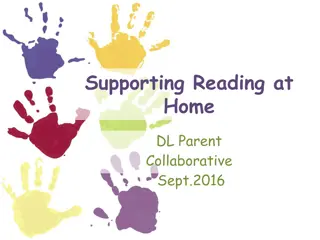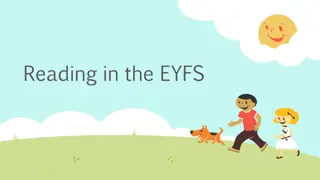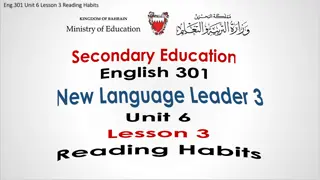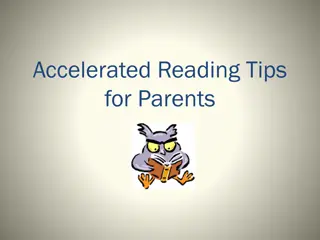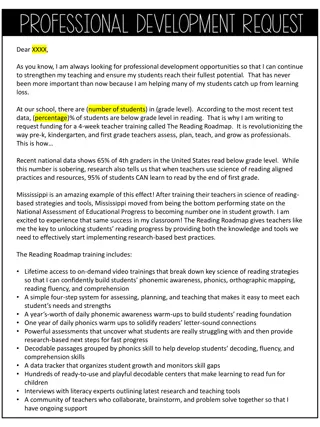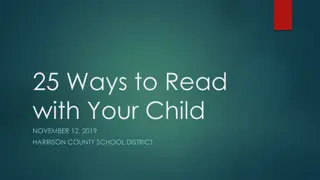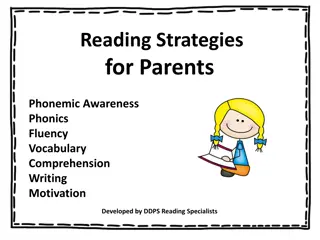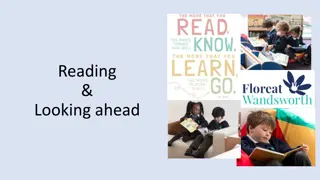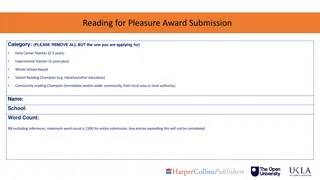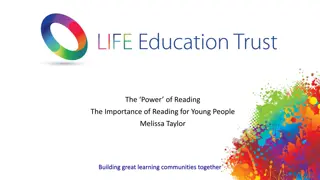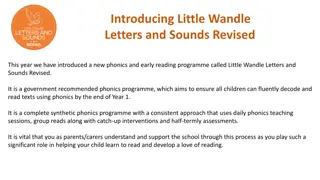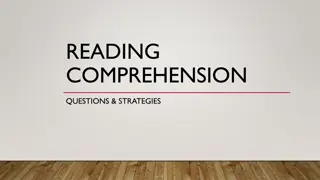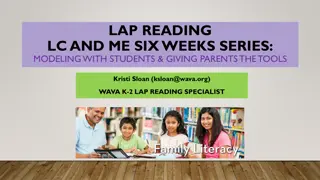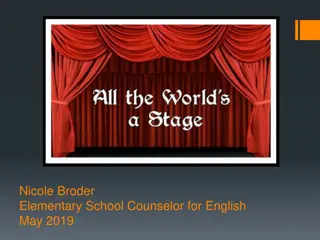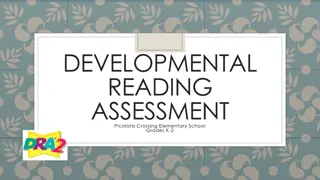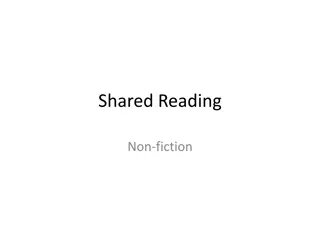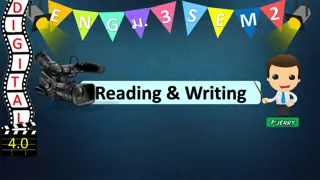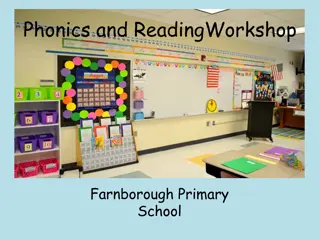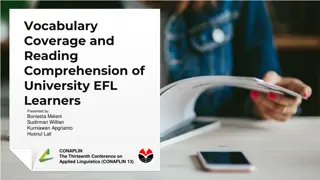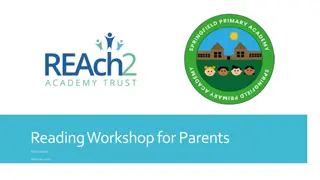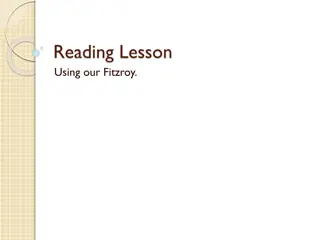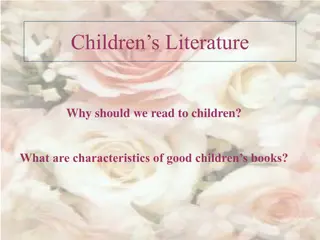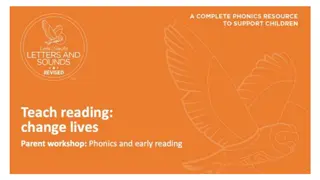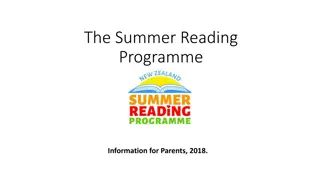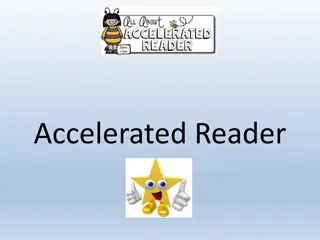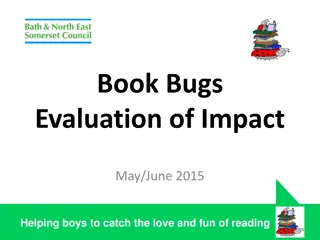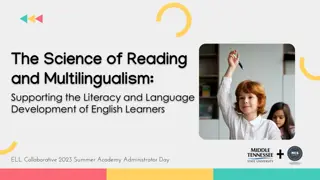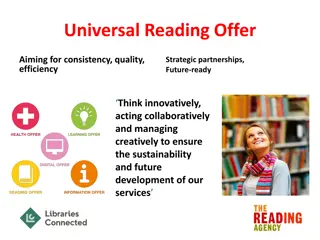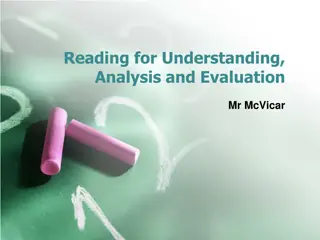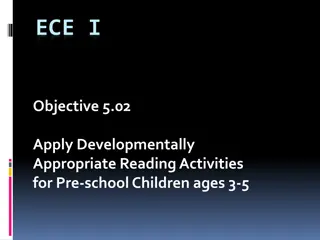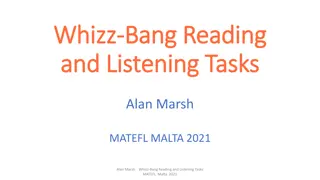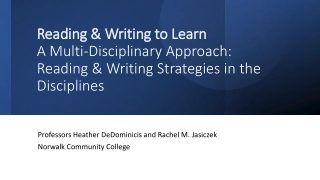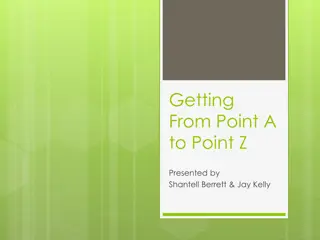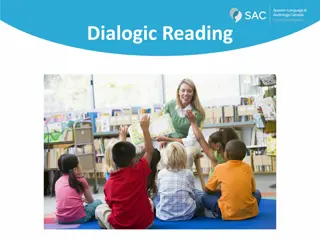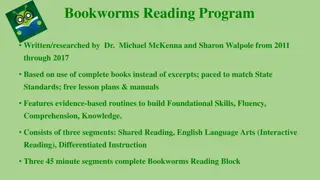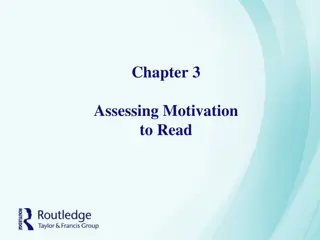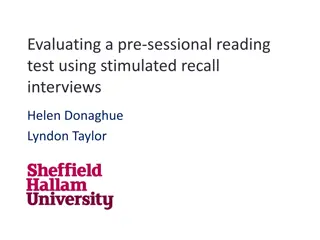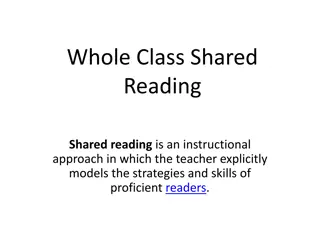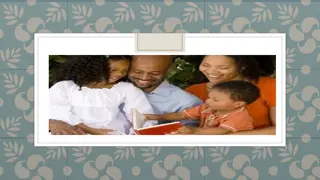Supporting Children in Developing Reading Skills
Understand the essential role of a parent as a co-reader in fostering children's reading abilities. Learn about decoding text using grapho-phonics, semantic, and syntactic approaches. Discover how to support children with phonics when reading, including breaking down words and blending sounds. Utilize semantic and syntactic skills to aid comprehension and encourage guessing. Finally, explore strategies for assisting reluctant or nervous readers through shared reading experiences.
Download Presentation

Please find below an Image/Link to download the presentation.
The content on the website is provided AS IS for your information and personal use only. It may not be sold, licensed, or shared on other websites without obtaining consent from the author. Download presentation by click this link. If you encounter any issues during the download, it is possible that the publisher has removed the file from their server.
E N D
Presentation Transcript
Parent Reader Training HELEN ALVEY
The Role of the Parent Reader We learn to read so that we may read to learn, but more important is to learn a love of reading. Orin Cochrane Your role as a supportive adult is to help children become reader thinkers . Thinking is intrinsic to reading. Thinking should happen after reading, thinking must happen before reading (as readers set up expectations of what the book will be about) and it must happen during reading (as readers confirm or disconfirm their predictions). As the co-reader, you must help children understand that you respect their thinking and share yours too.
How do we decode text? There are 3 tools that we use to read, these are: Grapho-phonics (letters and the sounds they make) Semantic using what they know about the story to inform them of what a word might be. This can sometimes be aided by using the letter sound/sounds at the beginning of the word. Syntactic using what they already know about the sentence.
Using phonics to support children when reading. If a child is struggling to read a word that can be sounded out , encourage the children to use their sound buttons and blending skills. Break the word down into its individual sounds: Blend the word by merging the sounds together. You can do this by steadily saying the sounds more quickly or by elongating each sound. If a word cannot be sounded out, it is a tricky word see list.
Using phonics to support children when reading. If a child is trying to read a polysyllabic or compound word, encourage the child to break the word down e.g. wishing/ hand bag If the word doesn t sound right, could it be an alternative pronunciation? Can those letters make any other sounds? Could it be one of our tricky words see list.
Using semantic/syntactic skills to support children when reading. Encourage the child to use the pictures/their knowledge of the story to take a guess. Cover up the word in the sentence - what word would make sense here? Ask: Does that make sense? Check the text and read it again. Give the child the word and allow them to carry on. Don t correct all misread words, particularly if the word makes sense in the context.
Supporting reluctant/nervous readers. Read a paragraph and have the child read the same paragraph immediately after. Read in unison and drop out and join in when you feel it is right to do so (this can be done quietly). Share the reading, taking one page each.
Before you start reading If the book is new to the child, share what you already know about it. If the child has already started reading the book, ask them to fill you in . Take the time to look at the front cover of the book together. Look at the front cover of the book: What is the book called? Relate to their experiences. What do you think it will be about? Talk about words used e.g. what is a diary?
Comprehension - Questioning Allow the child to read 2-3 pages of the book without questioning them. This will give the child time to get into the flow of decoding. Questions to ask during a story: What has happened in the story so far? Who is your favourite character and why? Why do you think did that? What do you think will happen next? Do you have any questions? Questions to ask during a non-fiction book: What have you found most interesting? What do you still want to find out?
Comprehension - Questioning If a child finishes a book whilst they are with you, you can ask them summative comprehension questions. Is this book similar to any other books you have read? Did any of the characters learn something in this story? Why do you think did ? Did you learn anything from this book/story? Did the story remind you of anything from your life? Did the story remind you of anything else you ve read? If the author/character was here now, what would you ask them? What rating would you give the book any why?
What to write in the reading records. Does the child read with: pleasure, enthusiasm, expression, fluency, confidence, stamina, rhythm, understanding, pace etc? Does the child self-correct? Does the child use the context to make predictions? Does the child talk about what they have read? Are there any phonic sounds/tricky words the child is regularly getting stuck on?
The best things you can do when reading with a child. Devote time to it. Make it a quality experience. Show your own interest and pleasure. See yourself a co-reader take part and offer sensitive support. You re not there simply to be read to but to engage in the text yourself too! Ask your own questions. Talk about the things it makes you think of too. Always remember, children are allowed to skip a word or two. They come back to it, they can guess what a word is if they want to. These are all strategies used by real-life good readers. Fluency and meaning are ultimately what s important.



